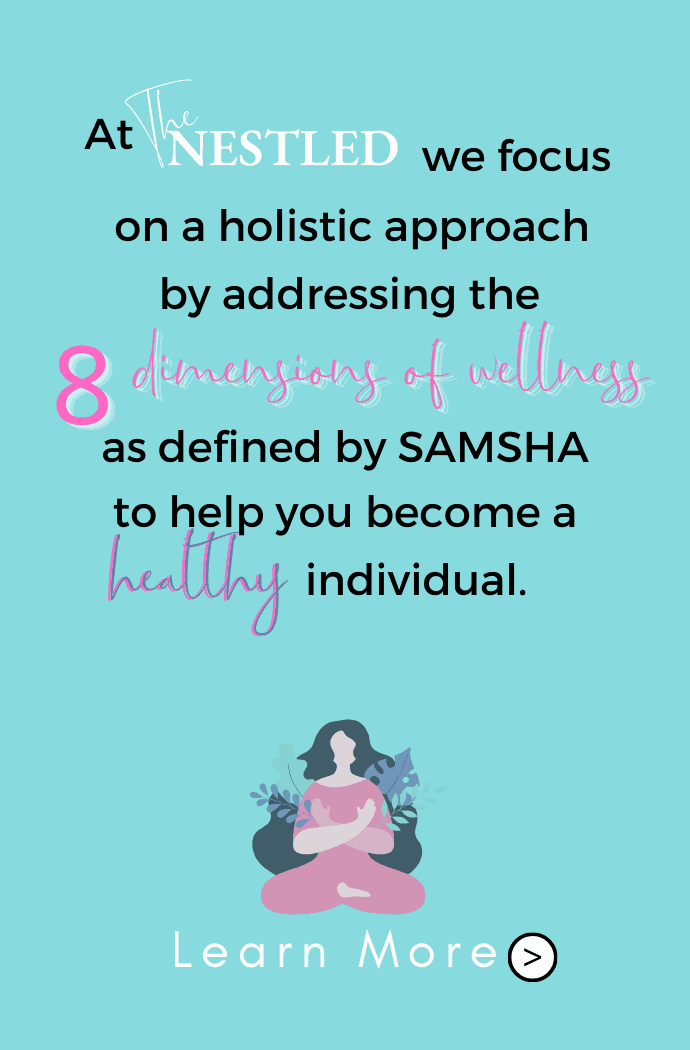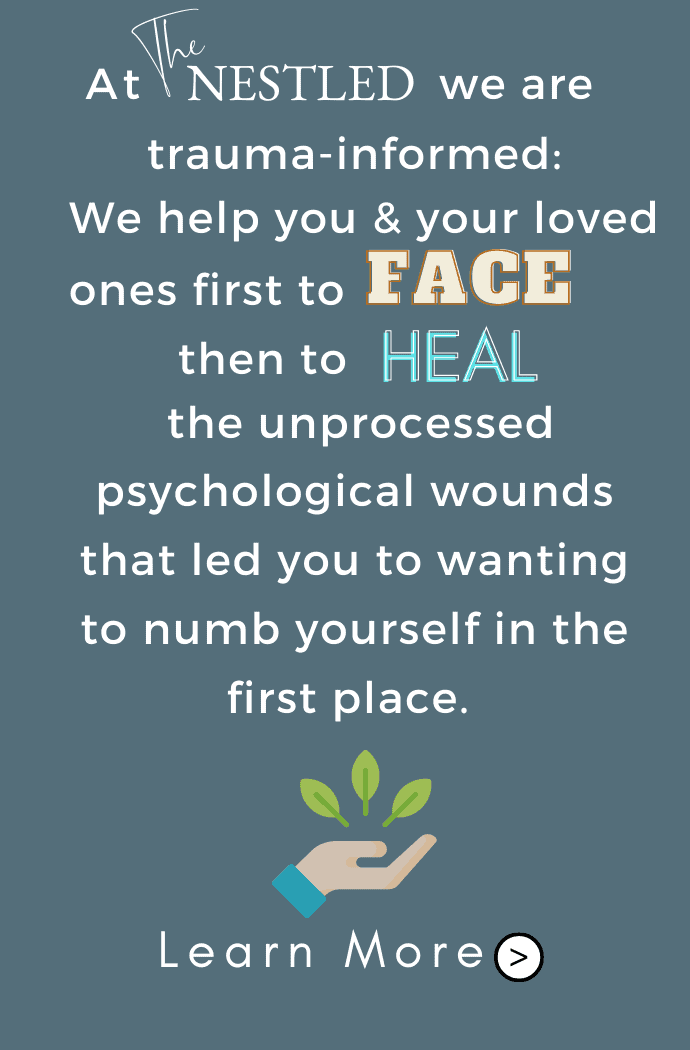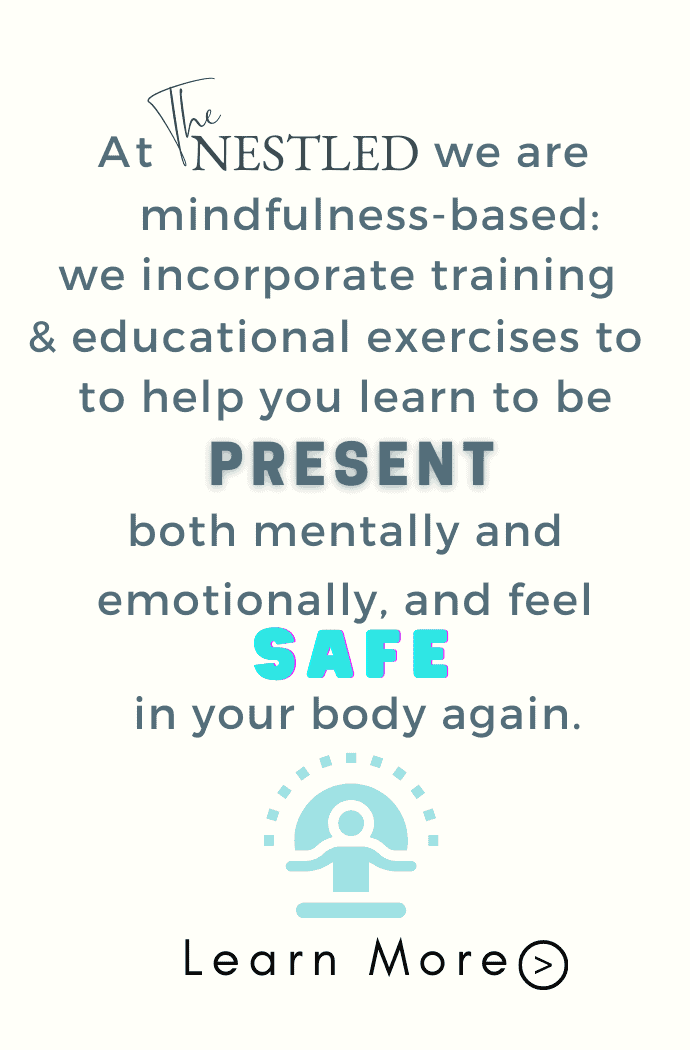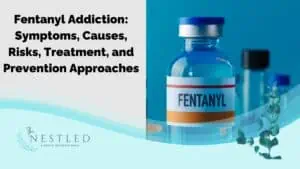Key Takeaway:
- Understanding the stages of substance use disorders can help individuals and their loved ones identify warning signs and take action before addiction takes hold.
- The stages of substance use disorders progress from experimentation to addiction, with each stage characterized by specific warning signs and behaviors.
- Treating substance use disorders often requires a combination of detoxification, behavioral therapy, medication, and support groups, and prevention strategies should focus on education, early intervention, access to treatment, and social support.
Are you concerned about the effects of substance use disorder in your life or the life of a loved one? Discover how to recognize the different stages of substance use, from experimentation to addiction, and how to seek help. You can take the first step to take back control.

Defining Substance Use Disorders: Understanding the Terminology
Defining Substance Use Disorders: Understanding the Terminology is crucial to recognize the stages of addiction. It is essential to understand that substance use disorders are a condition where an individual continues using drugs or alcohol despite experiencing negative consequences in their personal, social, and professional life. The most common forms of substance use disorders include alcohol use disorder, nicotine addiction, and drug abuse.
It works by identifying the patterns of behavior that indicate a person is suffering from substance use disorder. Generally, these patterns emerge when individuals begin using substances in ways that are detrimental to their health or well-being. They continue using despite social or interpersonal problems, developing physical tolerance and experiencing withdrawal symptoms.
The terminology can be broken down into valuable information obtained about each type of substance misuse disorder, including its causes and symptoms. People who suffer from substance abuse usually have difficulty controlling their impulses to seek pleasure from drugs or psychoactive agents. Such issues often result in changes in brain circuits related to judgment, decision-making capabilities, and motivation.
Historically speaking, Defining Substance Use Disorders: Understanding the Terminology has been a contentious topic due to inconsistencies in language and terminology around addiction. Previously referred to as ‘substance abuse’ or ‘harmful habits,’ people now recognize it as a chronic illness requiring medical treatment across different jurisdictions worldwide.
Types of Substances: Common Categories and Their Effects
Types of substances refer to different categories of drugs that people use. Substance abuse is a significant public health problem in the world today, and it affects people from all walks of life. Understanding the types of substances and their effects is key to preventing substance use disorders and seeking treatment when necessary.
Types of Substances: Common Categories and Their Effects
| Substance Category | Examples | Effects |
|---|---|---|
| Stimulants | Cocaine, Methamphetamine, Nicotine, Ecstasy, ADHD medications (Ritalin, Adderall) | Increased energy and alertness, decreased appetite, elevated mood, increased heart rate and blood pressure |
| Depressants or Sedatives | Alcohol, Barbiturates (phenobarbital), Benzodiazepines (Xanax, Valium), Opioids (Heroin, Fentanyl) | Euphoria or relaxation, slowed respiration and heart rate |
| Hallucinogens | LSD (Acid), Psilocybin mushrooms (“Shrooms”), Mescaline; Designer cannabinoids (“Spice”, “K2”) , Ketamine | Altered reality perception or senses (sight, smell etc.) |
| Cannabis/Marijuana | Cannabis sativa plant being smoked or consumed through edibles | Euphoria followed by slow thinking speed; |
| Inhalants | Aerosol sprays or volatile liquids such as paint thinners, cleaning fluids etc | A sense of “drunkenness” with drowsiness |
Stimulants are drugs that increase energy levels and alertness in users. They can cause rapid heartbeat rates and high blood pressure levels in some people. Depressants or sedatives slow down brain activity which can lead to feelings of drowsiness or euphoria in users. Hallucinogens alter perceptions like sensory experiences making users feel separated from reality.
A true fact is that drug addiction has increased globally by 30 percent in the past decade, and opioids are the most commonly abused substances worldwide. (source: World Health Organization)
Now that we have discussed types of substances let’s dive into the progression of substance use disorders from experimentation to addiction. As humans, we all crave something, and many times, it can be the illusion of being in control that turns a curious individual experimenting into a chronic addict with enormous physical and mental health challenges.
The Stages of Substance Use Disorders: Progression and Warning Signs
Substance use disorders develop over time, with each stage featuring its own unique warning signs and risks. In this section, we’ll dive into the stages of substance use disorders and explore the progression from experimentation to addiction. We’ll examine the different stages of substance use, including:
- Experimentation
- Regular use
- Risky use
- Harmful use
- Dependence
- Addiction
and discuss the warning signs for each stage. It is essential to recognize the early stages of substance use disorders to prevent further development and seek help before it’s too late.
Experimentation: Trying Drugs and Alcohol for the First Time
Experimentation: Trying Drugs and Alcohol for the First Time is a stage in the progression of substance use disorders that involves the initial introduction to drug and alcohol consumption. Many young people, sometimes pressured by peers, experiment with drugs and alcohol as they seek new experiences or try to fit in. Others may be curious or have heard positive things about using these substances. Regardless of the reason, Experimentation is often the first step towards addiction.
During Experimentation, individuals may try drugs or alcohol once or twice out of curiosity but then return to their normal lives without any significant consequences. In some cases, however, Experimentation may lead to more frequent use and eventual addiction. Individuals who continue to use drugs or alcohol beyond Experimentation often experience a sense of exhilaration and relaxation that can lead them to crave more.
While trying drugs or alcohol may seem like an exciting adventure at first, it’s essential to understand that experimentation does carry some real risks. For example, there is always the possibility of overdose or negative side effects from mixing different substances. Moreover, engaging in risky behavior while under the influence can lead to serious accidents or legal problems.
If you are considering experimentation with drugs or alcohol, think carefully before taking action. Instead of giving in to peer pressure, consider alternative ways to socialize and have fun that don’t involve substance use. Remember that your health and safety are paramount considerations when trying new things – don’t risk them just for a momentary thrill.
Regular Use: Frequent Consumption of Substances
Regular use refers to the frequent consumption of substances, either drugs or alcohol, in which an individual starts to develop a pattern of regular and repeated usage. Initially, the substance may be used occasionally, but with time it becomes a regular part of daily life. The individual may start consuming the substance for various reasons like anxiety, depression, boredom or simply to experience pleasurable feelings.
The frequent consumption of substances leads to chemical changes in the brain and the body develops a tolerance to the substance. As a result, users need more of the substance to feel its effects – this leads to drug dependence or addiction. Regular users will often begin seeking out these substances more frequently or in larger amounts than before.
Regular use also affects individuals differently; some people can control their consumption while others cannot. This is because genetics plays an essential role in determining whether an individual is prone to addiction or not. Additionally, environmental factors such as home environment and peer influence can also contribute to regular use.
There are different stages in substance use disorders that are characterized by progressive changes in behavior and physical health. One such stage is Regular Use and if left untreated progress into riskier behaviors with greater consequences.
Risky Use: Engaging in Dangerous Behavior while Under the Influence
A dangerous outcome of substance use disorders is the engagement in risky behavior while under the influence. This can include activities such as driving under the influence, unprotected sex, or even criminal behavior.
When a person uses drugs or alcohol, their judgment and decision-making abilities are significantly impaired. They may feel invincible and be more likely to take risks they wouldn’t otherwise. Additionally, some substances can increase aggression or decrease inhibition, making it easier to engage in dangerous behavior.
Risky use can have severe consequences for both the individual and those around them. In addition to legal repercussions, individuals may suffer from injuries, sexually transmitted infections, or other health problems. It can also strain relationships with loved ones or lead to social isolation.
Harmful Use: Damage to Physical, Mental, and Social Health
Harmful use of substances can lead to damage in various areas of our health, including physical, mental, and social aspects. It’s important to understand that harmful use doesn’t just refer to addiction or dependence on substances, but also includes any usage patterns that adversely impact our well-being.
This kind of harm can occur due to the direct effects of substances on our bodies or from the secondary effects such as impaired decision-making abilities or negative consequences related to substance use. Harmful use can cause physical harm such as liver damage, infections, injuries, and a weakened immune system. It can also lead to mental issues like depression, anxiety, psychosis, and memory impairment.
Harmful use also affects our social health since it can cause difficulties in maintaining relationships with family and friends. The impact of harmful substance use is not limited only to the user but extends widely to those around them too. Apart from that, it can result in financial problems that may strain relationships among people.
Pro Tip: If you find yourself struggling with harmful use or know someone who does, seek professional help immediately. There’s no shame in asking for assistance when dealing with substance-related concerns no matter how minor they might seem at first glance.
Despite initially providing a sense of fun and relief for users sometimes browsing to explore new things leads towards dependence on Substances; which prompts us towards the next heading ‘Dependence: Physiological and Psychological Dependence on Substances‘.
Dependence: Physiological and Psychological Dependence on Substances
Dependence: Physiological and Psychological Dependence on Substances is a commonly heard term when it comes to substance use disorders. The dependence that individuals develop on these substances is of two types- physiological and psychological.
Physiological dependence occurs when the body becomes accustomed to the presence of a particular substance in the system. As a result, when this substance is withdrawn abruptly, the body experiences physical symptoms like nausea, tremors, seizures or sweating. On the other hand, psychological dependence occurs due to a shift in an individual’s thought process whereby they feel like they cannot function properly without consuming their substance of choice.
Several factors play into how both physiological and psychological dependence on substances work. For instance – the person’s age, gender, weight or genetic disposition can impact their likelihood of developing an addiction. Additionally, using drugs to alleviate mental health conditions like anxiety or depression can also increase one’s risk for dependency as well.
Interestingly enough, not all addictions result in drug or alcohol usage; processes like gambling or sex also qualify under addictions since they too are activities that are used as coping mechanisms for underlying emotional pain.
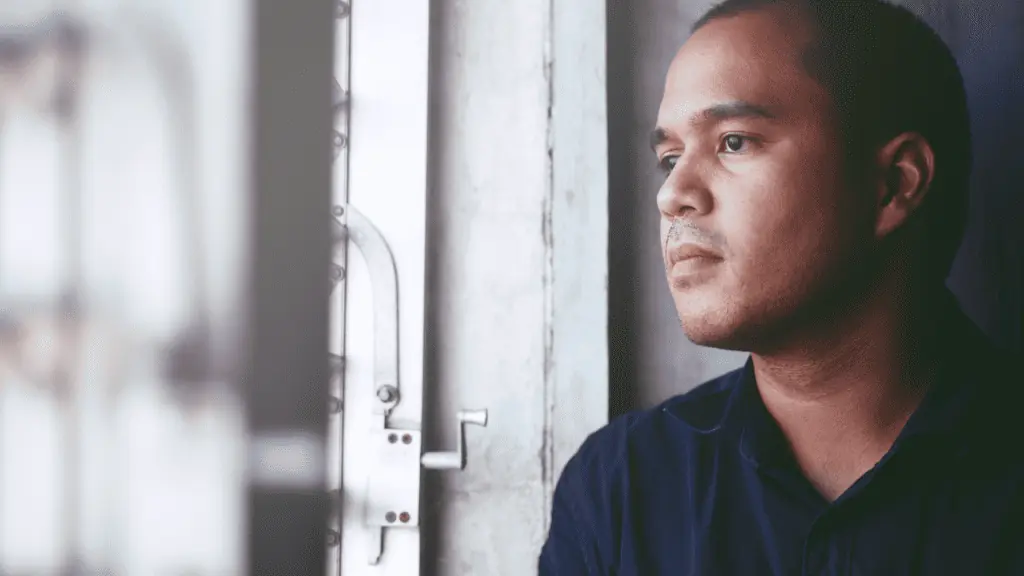
Addiction: Loss of Control and Compulsive Use of Substances
Addiction: Loss of Control and Compulsive Use of Substances is a state where an individual’s dependency on certain substances has reached the point where they feel powerless to control it. It is characterized by a constant urge to use drugs or alcohol despite adverse consequences.
In exploring Addiction: Loss of Control and Compulsive Use of Substances, let us examine its five significant components:
- Habitual or repeated drug use can lead to addiction so that there is a need for greater amounts over time to produce the same effect, known as tolerance.
- Despite recognizing negative consequences, such as health hazards or relationship problems or job loss due to substance abuse, one continues using the substance.
- Behavioral changes due to drug intake affect relationships with friends and family; for instance, being secretive about one’s habit or having an agitation when there is no access to the drug.
- Individuals with addiction usually become preoccupied with acquiring their substance of choice when it is not available.
- Stopping substance use may cause withdrawal symptoms like anxiety, insomnia, depression and in severe cases seizures.
The complexity of Addiction: Loss of Control and Compulsive Use of Substances lies beyond reinforcing effects but also relies on psychological elements such as emotion regulation deficits and compulsivity features. It includes various genetic and environmental factors like trauma at early life stages contributing to developing addiction.
Treating Substance Use Disorders: Options for Recovery
In this section, we’ll explore different options for recovery that can help individuals break the cycle of addiction. We’ll start by discussing detoxification, which provides a safe environment for managing withdrawal symptoms. Next, we’ll delve into behavioral therapy, which seeks to change the underlying thoughts, emotions, and behaviors that contribute to addiction. We’ll also look at medication-assisted treatment, which can help to reduce cravings and ameliorate withdrawal symptoms. Finally, we’ll discuss the benefits of support groups, which offer peer support and accountability through the recovery process.
These options, when used alone or in combination with each other, can greatly increase the chances of success in recovery.
Detoxification: Withdrawal Management in a Safe Environment
Detoxification or “detox” refers to the process of removing toxic substances from the body. In the context of substance use disorders, detoxification specifically means managing withdrawal symptoms in a safe and controlled environment. This is an important first step in treating addiction because withdrawing from certain drugs can be dangerous or even life-threatening.
Detoxification works by gradually reducing the amount of drugs or alcohol in a person’s system while managing withdrawal symptoms. This process may involve medication-assisted treatment (MAT) to ease symptoms like nausea, tremors, or seizures. MAT can also help prevent relapse by reducing cravings and other psychological symptoms.
The goal of detoxification is to help individuals safely manage withdrawal and stabilize their physical health so they can move on to further treatment options. But it’s important to note that detox alone doesn’t address the underlying issues that contribute to addiction, such as trauma or mental health problems.
In some cases, people may attempt to detox on their own at home, but this can be dangerous – especially when withdrawing from certain drugs like benzodiazepines or opioids. Withdrawal from these substances can cause severe physical symptoms and might require medical attention. That’s why professional medical supervision is crucial for safe and effective detoxification.
Behavioral Therapy: Changing Thoughts, Emotions, and Behaviors
Behavioral Therapy: Changing Thoughts, Emotions, and Behaviors is an essential part of treating substance use disorders. It focuses on changing negative thoughts and emotions surrounding addiction to promote positive behaviors that lead to recovery.
This type of therapy works by identifying and addressing the root causes of addictive behaviors, such as stress, trauma, or mental health issues. A therapist will work with a patient to develop coping mechanisms and alternative solutions to combat triggers and cravings.
Research has shown that Behavioral Therapy is incredibly effective in reducing drug use, improving mental health outcomes, and enhancing overall quality of life for those struggling with addiction. By addressing negative thought patterns and emotional distress head-on, individuals can build a stronger foundation for long-term sobriety.
Did you know that Cognitive Behavioral Therapy (CBT) is often used in conjunction with other forms of therapy for optimal results? This combination approach has been proven in studies to be more effective than singular approaches.
Medication: Reducing Cravings and Withdrawal Symptoms
Medication: Reducing Cravings and Withdrawal Symptoms is a crucial aspect of treating substance use disorders. Medications can be useful in different stages of addiction, ranging from reducing cravings to helping with withdrawal symptoms during detoxification.
In the first point, Medication-Assisted Treatment (MAT) can help reduce drug or alcohol cravings by blocking certain receptors in the brain that trigger these urges. It can also alleviate anxiety and depression associated with addiction. Second, medications like methadone or buprenorphine can manage opioid withdrawal symptoms effectively for individuals recovering from opioid use disorders. Third, Antabuse is a medication used to treat alcoholism by making patients ill if they drink while taking the medication.
In addition to traditional medications, emerging treatments such as Deep Transcranial Magnetic Stimulation (dTMS), which uses magnetic pulses to stimulate nerve cells in the brain, shows promise in treating substance use disorders.
Interestingly, some medications previously used for other illnesses have been found to be useful in treating substance use disorders. For example, Naltrexone was initially used to treat opioid addiction but has been found effective in treating alcohol dependence as well.
With so many options available to combat substance abuse and addiction, it’s important to seek the advice of professionals regarding treatment options that are suitable for individual needs.
Support Groups: Peer Support and Accountability
Support groups are vital when it comes to substance use disorder recovery because they provide both peer support and accountability. The power of having a support system made up of people facing similar struggles is invaluable, and the accountability factor keeps individuals on track towards their goals.
Here are six important points to consider regarding Support Groups: Peer Support and Accountability:
- Peer support means receiving encouragement, guidance, and advice from individuals who understand the challenges you’re facing.
- Being accountable to oneself can be difficult; being accountable to a group means stronger motivation to follow through.
- Many support groups use a 12-step program that creates an environment of camaraderie and shared experiences among its members.
- Research shows that people who participate in support groups have better substance use treatment outcomes than those who don’t.
- There are countless types of support groups available, including faith-based programs, wellness-focused meetings, and gender-specific groups.
- Many rehabilitation centers offer access to support groups for ongoing care after treatment.
Peer support involves not just emotional help but practical assistance with issues like transportation or childcare needs so that addicts aren’t derailed from attending meetings or therapy sessions. It also helps break down the feeling of isolation many experience when dealing with substance abuse disorders on their own. During group meetings, participants learn about new strategies for coping mechanisms and develop new tools for handling triggers that contribute to substance use.
Now that we know what ‘Support Groups: Peer Support and Accountability’ entails, let’s explore how to prevent substance use disorders with strategies for a healthy lifestyle. So, You think you know all there is to know about addiction? Think again.
Preventing Substance Use Disorders: Strategies for a Healthy Lifestyle
In this part of the article, we focus on strategies for living a healthy lifestyle and preventing substance use disorders. Here, we’ll discuss various sub-sections that provide a comprehensive understanding of preventing substance use disorders, such as the importance of:
- education
- early intervention
- access to treatment
- social support
By implementing these strategies, we can create a culture that prioritizes prevention and positive support, and ultimately, reduce the prevalence of substance use disorders in our communities.
Education and Awareness: Understanding the Risks and Consequences
Understanding the risks and consequences of substance use is essential for preventing substance use disorders. Education and awareness can be an effective strategy to create a healthy lifestyle and prevent addiction.
Education and awareness work by providing knowledge about the effects of substance use on physical and mental health, relationships, work-life, and society. When people understand the risks, the reasons to avoid or stop using substances become more apparent. They are more likely to make informed decisions about their behaviors.
Additionally, education and awareness can reduce stigma around substance use disorders. It can encourage people to seek help if needed without feeling ashamed or embarrassed. Furthermore, it can facilitate communication between parents, teachers, healthcare providers, peers, and individuals struggling with addiction.
According to a study published in the Journal of Substance Abuse Treatment, school-based interventions that focused on educating students about alcohol and drug abuse had a significant impact on reducing substance use among adolescents.
Did you know that only 24% of people who need treatment for substance use disorders receive specialized care? It highlights the need for education and awareness at all levels of society.
“Prevention is better than cure,” but addressing substance use issues at an early stage can save lives. In my next section segment ‘Are you or someone you know struggling with Addiction? Early Intervention Can Save Lives.’ let’s learn how early intervention strategies like screening, brief intervention, referrals to treatment (SBIRT), mindfulness techniques, cognitive-behavioral therapies (CBT), motivational interviewing(MI), contingency management(CM) can benefit individuals dealing with addiction.
Early Intervention: Addressing Substance Use Issues at an Early Stage
Intervening early in addressing substance use issues has proven to have a positive impact on reducing the risk of individuals developing substance use disorders. It involves identifying the signs and risk factors of drug or alcohol use at an early stage, and implementing measures to prevent them from becoming habitual.
Early intervention works by providing education and support to individuals before they develop an addiction. It raises awareness about the harms of substance abuse and helps individuals make informed decisions about their choice of using drugs or alcohol. By intervening early, it becomes easier for individuals to overcome peer pressure and withdrawal symptoms. When family members or healthcare providers intervene, they can help create a supportive environment that empowers the individual to seek treatment if needed.
One valuable aspect of early intervention is its ability to recognize risky behavior patterns that may not be immediately visible to others. Often, young adults experiment with drugs or alcohol as a coping mechanism during stressful life circumstances, which can escalate into addiction. Early intervention provides an opportunity to address these underlying issues and offer alternative coping mechanisms.
Access to Treatment: Overcoming Barriers to Recovery
Access to Treatment: Overcoming Barriers to Recovery is a crucial component of preventing substance use disorders. It refers to the accessibility and availability of evidence-based treatments for individuals struggling with addiction. This includes both behavioral therapies and medication-assisted treatment options.
Access to treatment is important because it can help individuals overcome the barriers that prevent them from seeking help. These barriers can include stigma, lack of insurance coverage, limited resources in rural or underserved areas, and personal beliefs about addiction and recovery.
One of the ways access to treatment works is by providing education and awareness about addiction and recovery. When individuals understand that substance use disorders are a chronic condition that require long-term management, they are more likely to seek out professional help. Additionally, connecting individuals with support groups or counseling services can play an important role in overcoming stigma and creating a sense of community.
Research has also shown that medication-assisted treatment (MAT) for opioid addiction is highly effective at reducing substance use and improving outcomes like employment and social functioning. Access to MAT can be limited by regulations, healthcare provider bias, or insufficient funding for comprehensive care programs.
Social Support: Building Positive Relationships and Community Support.
The role of social support in preventing substance use disorders is a topic that needs to be discussed at length. Building positive relationships with individuals who provide emotional, informational, and instrumental assistance can play a significant role in reducing the risk of addiction. It not only provides one with reassurance but also creates a sense of community support.
Social Support: Building Positive Relationships and Community Support works by providing individuals with meaningful relationships that promote healthy behaviors. People who are isolated or lack social support are more likely to experiment with drugs as it can ease their anxiety and provide comfort. In contrast, people with strong social networks have better coping mechanisms to deal with stressors in life; thereby dependence on substances decreases. Thus, building positive relationships is essential for preventing substance abuse.
It would interest you to know that social support has been found to be effective in reducing nicotine cravings amongst teens who were trying to quit smoking (Pediatrics, 2008). This study tells us the importance of the role of social support in overcoming addiction.
Research shows that social support networks come from various sources such as family members, friends, religious groups, workplaces, volunteering organizations or clubs. These individuals have a powerful influence on our decision making towards drug use. Family environment plays an important role too — families who create an open and supportive space for communication are less likely to see their children suffer from addiction problems.
Take the Leap Towards a Renewed Tomorrow
In understanding the intricate stages of substance use disorders, one gains not only awareness but the power to seek timely intervention. The journey to recovery begins with knowledge and an empowering community by your side. If you or a loved one is navigating this challenging path, remember: The Nestled in Las Vegas is here to guide, support, and facilitate transformative healing. Don’t wait; reach out today and take the first step towards a brighter, substance-free future.
5 Well-Known Facts About Understanding the Stages of Substance Use Disorders: From Experimentation to Addiction:
- ✅ Substance use disorder is a complex condition that can be influenced by genetic, environmental, and psychological factors. (Source: National Institute on Drug Abuse)
- ✅ Substance use disorder develops over time, often starting with experimentation and occasional use of drugs or alcohol. (Source: Mayo Clinic)
- ✅ Continual use of drugs or alcohol can lead to physical dependence and tolerance, which can make it difficult to quit without professional help. (Source: American Addiction Centers)
- ✅ Substance use disorder can have severe consequences on an individual’s health, relationships, and ability to function in day-to-day life. (Source: Substance Abuse and Mental Health Services Administration)
- ✅ Effective treatment for substance use disorder often involves a combination of medication, therapy, and support groups. (Source: National Institute on Drug Abuse)
FAQs about Understanding The Stages Of Substance Use Disorders: From Experimentation To Addiction
What are the different stages of substance use disorders?
The stages of substance use disorders are: experimentation, regular use, risky use, dependence, and addiction. Each stage is characterized by different levels of use and patterns of behavior.
How do I know if I am in the experimentation stage?
If you are in the experimentation stage, you may be trying a substance for the first time or trying a new substance. Your use is limited and sporadic, and you are not experiencing any negative consequences from your use.
What is regular use?
Regular use occurs when a person begins to use a substance more frequently, often on a daily or weekly basis. This stage is characterized by the need to use the substance to feel normal or to cope with daily life.
What is risky use?
Risky use is when a person begins to use a substance in a way that increases their risk for negative consequences, such as using more than they intended or combining substances. This stage often leads to problems in various areas of a person’s life, such as work, relationships, and health.
What is dependence?
Dependence occurs when a person develops a physical and/or psychological dependence on a substance. They may experience withdrawal symptoms when they try to stop using the substance and require more of the substance to achieve the same effects.
What is addiction?
Addiction is the most severe stage of substance use disorders, characterized by compulsive drug seeking and use despite negative consequences. People in this stage may lose control over their use and experience significant impairments in various areas of their life.



